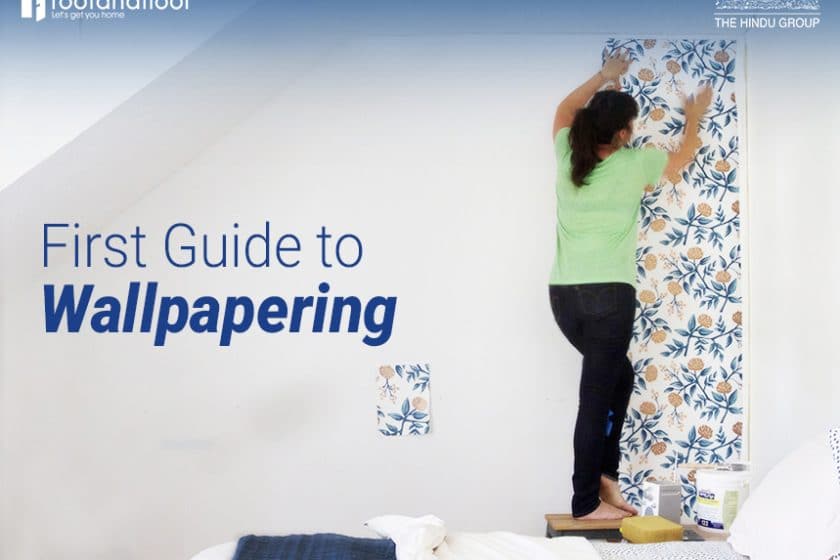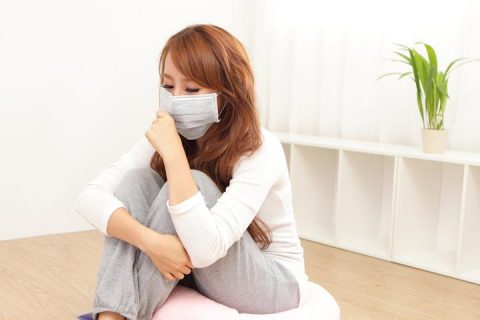An expensive but excellent way to brighten up your room is by wallpapering. Wallpapers are now available in endless colour and style options ensuring that you always find the ‘one design’ that fits your room’s decor perfectly. The right wallpaper can add colour, style and brightness to your room. And the best thing is that you can wallpaper your room all by yourself. The key is to prepare the wall first and then follow the instructions based on the type of paper you have chosen.
Choosing the right wallpaper
There are thousands of options for wallpapers in terms of colour, design and textures. However, based on how they stick to the wall, there are three types of wallpaper:
- Pre-pasted – Where the wallpaper comes with an adhesive
- Un-pasted – Where the adhesive needs to be applied on the paper
- Paste-the-wall – Where the adhesive has to be applied on the wall instead of the paper
Decide on the type of wallpaper you want to opt for.
Measure the length and breadth of your wall and confirm how many rolls of the wallpaper you will need to buy. The length of the paper in a roll may vary and, therefore, it is important to read the label carefully before making any purchase. The first step of wallpapering is to prepare the walls:
Preparing the wall
Before you hang the new wallpaper, make sure that your wall is completely clean of any old wallpaper or its residue. Most wallpapers are strippable and can be peeled away from the wall easily. The leftover pieces can be washed with soap and hot water. In case a lot of wallpaper is left behind, you will need to soak the walls to loosen the adhesive.
If only a thin layer of paper is left behind, it can be soaked using a sponge and hot water. Leave the wall soaked for 15 minutes before peeling off the paper using a stripping knife.
If the wallpaper is non-strippable, you will have to work a bit harder. You will have to use a mixture of hot water and wallpaper stripper to properly soak the paper. Follow the instructions as written on the packaging. Apply the solution to one section of the wall, let it rest for 10 minutes, and peel it using a stripping knife. It is recommended to work in smaller areas so that you don’t have to excessively wet the walls.
In order to ensure you have the cleanest possible wall, be sure to remove any residual paste left behind on the wall by soaking paste patches and removing them using a stripping knife. Finally, wash the entire wall using hot soapy water and tap dry it using a dry towel.
Preparations before the first strip
- Before hanging the wallpaper, it is important to examine the paper for visual defects. It is safe to start working from hidden corners such as behind the door, to get the hang of wallpapering.
- It is very important that wallpaper is pasted in a straight-line. Therefore, use a pencil to carve a straight line from roof to the ceiling. You can use a laser level to ensure that even if the floors are not level, the wallpaper still comes straight.
- If you are using a patterned wallpaper, start hanging from the middle (and the most prominent area) of the wall. Calculate the location where you might need to cut the paper or paste a new one beforehand to avoid mismatch in the patterns.
- Measuring the wall correctly is very important. Measure it straight from the bottom edge up to the ceiling. You might consider adding 10 cm additional length to the wallpaper to leave room for trimming.
Hanging the wallpaper
Pre-pasted
- To activate the paste on the backside of wallpaper, a brief soaking of the wallpaper in lukewarm water is essential. Take one cut-length of paper at a time and soak it for 15 seconds.
- Bring it out and lay flat with paste side up. Roll it loosely without creasing up.
- Repeat the process for several cut lengths of paper. Let them rest for 10 minutes before you start hanging the wallpaper.
- Use a ladder to reach the ceiling and unfold the roll. Position the paper on your pencil marks leaving 5 mm for trimming along the ceiling line.
- Open the roll stroking the paper against the wall along the marked line. When fully satisfied with the position, smooth the wallpaper to remove any air bubbles.
- Cut the additional length from the ceiling and the floor. Wash the additional paste, if any, using a sponge and soap water.
Un-pasted
- Mix the recommended paste by following the instructions on the label. Take special care to maintain the right consistency of the paste
- Stack the cut length of wallpaper with face down the table, all laid in the same direction
- Now start applying the paste in herringbone patterns starting from the centre and moving out to the edges.
- Fold the ends of the wallpaper towards the centre taking special care not to form any crease. This will help you recognise the pasted side easily.
- Let the paper rest for 8 to 10 minutes or longer ad mentioned in the label of the wallpaper roll.
- Repeat steps number 4-6 to paste the wallpaper.
Paste-the-wall
- For paste-the-wallpaper, you need to simply paint the paste on the prepared wall. If the paste is not pre-mixed, prepare it as per the instructions mentioned on the box.
- Paste one section of a wall at a time so that the paste doesn’t dry. Paint the paste in a little larger area than the width of each cut piece.
- Put the wallpaper in its place and smooth it using a brush or smoother.
- Trim off to fit the edges using a super sharp cutting blade.
Handling tricky areas
Corners
In order to get a smooth finish at corners, hang the paper in two parts. When pasting the last strip in the corner, measure 15mm additional width and let it extend onto the next wall. Paste the next strip overlapping the 15mm of additional length.
Switches and plug points
Switch off the electricity supply when pasting the wallpaper over switches or power points. Lay the wallpaper straight over the socket and cut out wallpapers diagonally measuring exactly the length of the fitting. Crease it against the wall and smooth it using a smoother or a flat knife. Trim the edges for perfect fit and then turn the power back on.
Windows and doors
Paste the wallpaper in such a way that it overlaps the windows and door frames. Smooth the paper in the wall before making a diagonal cut in the paper from the corner points of the windows or door frames. Remove the additional paper and smooth the edges. Repeat the process for all the doors and windows frames.
Now that you are done through the tiring process and have gorgeous looking finished walls in front of you, sit back and admire.






